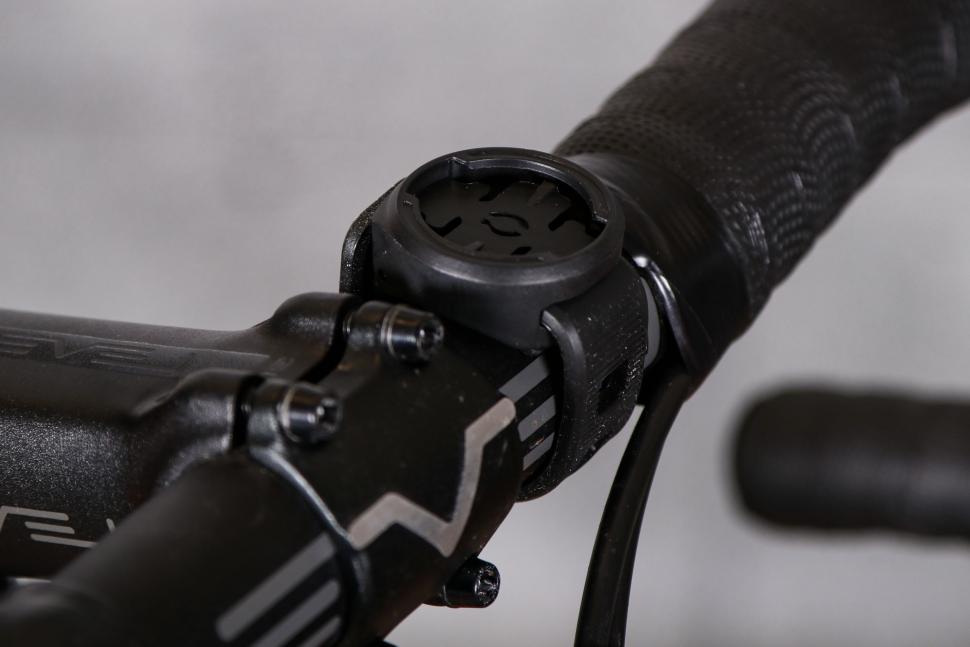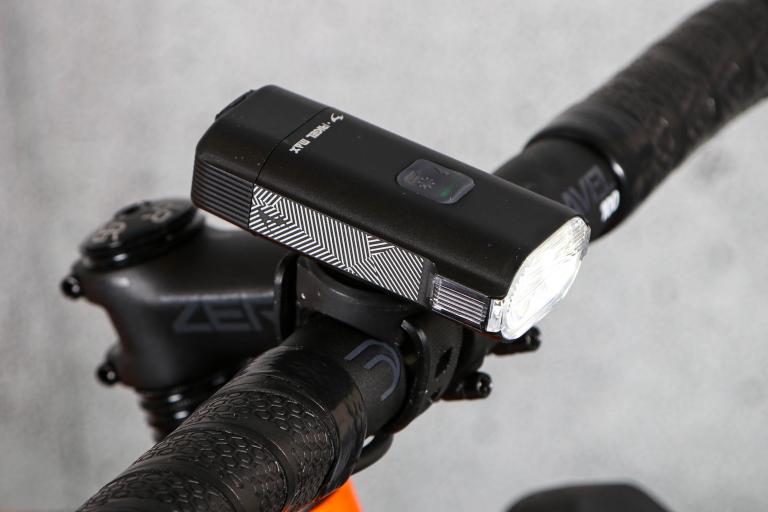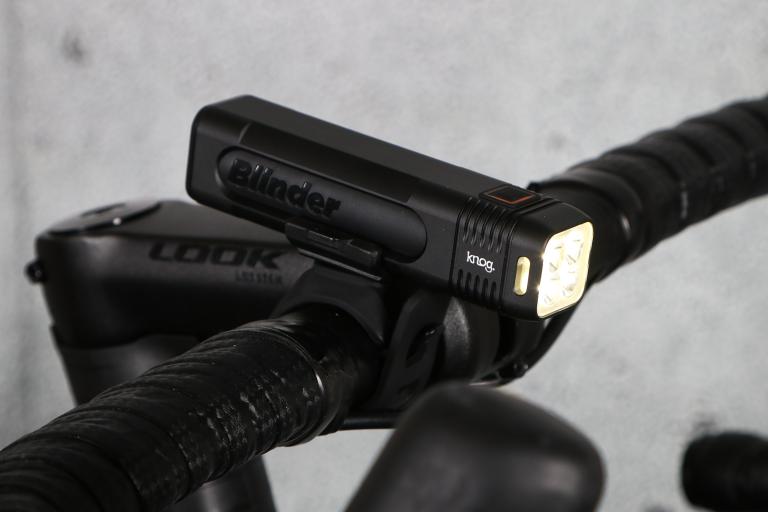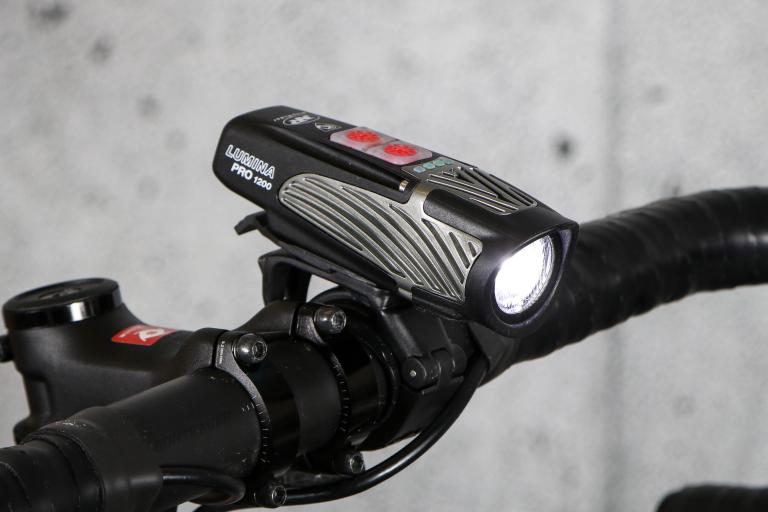- News
- Reviews
- Bikes
- Components
- Bar tape & grips
- Bottom brackets
- Brake & gear cables
- Brake & STI levers
- Brake pads & spares
- Brakes
- Cassettes & freewheels
- Chains
- Chainsets & chainrings
- Derailleurs - front
- Derailleurs - rear
- Forks
- Gear levers & shifters
- Groupsets
- Handlebars & extensions
- Headsets
- Hubs
- Inner tubes
- Pedals
- Quick releases & skewers
- Saddles
- Seatposts
- Stems
- Wheels
- Tyres
- Tubeless valves
- Accessories
- Accessories - misc
- Computer mounts
- Bags
- Bar ends
- Bike bags & cases
- Bottle cages
- Bottles
- Cameras
- Car racks
- Child seats
- Computers
- Glasses
- GPS units
- Helmets
- Lights - front
- Lights - rear
- Lights - sets
- Locks
- Mirrors
- Mudguards
- Racks
- Pumps & CO2 inflators
- Puncture kits
- Reflectives
- Smart watches
- Stands and racks
- Trailers
- Clothing
- Health, fitness and nutrition
- Tools and workshop
- Miscellaneous
- Buyers Guides
- Features
- Forum
- Recommends
- Podcast
review
 2021 Moon Rigel Rechargeable Front Light.jpg
2021 Moon Rigel Rechargeable Front Light.jpg£55.00
VERDICT:
Clever and well-built front light with excellent features but average lighting power
USB-C charging
Good burn-times
Lots of features
IPX7 rating
Narrow beam
Antidazzle lens seems to affect illumination
More complex than some
Weight:
109g
Contact:
At road.cc every product is thoroughly tested for as long as it takes to get a proper insight into how well it works. Our reviewers are experienced cyclists that we trust to be objective. While we strive to ensure that opinions expressed are backed up by facts, reviews are by their nature an informed opinion, not a definitive verdict. We don't intentionally try to break anything (except locks) but we do try to look for weak points in any design. The overall score is not just an average of the other scores: it reflects both a product's function and value – with value determined by how a product compares with items of similar spec, quality, and price.
What the road.cc scores meanGood scores are more common than bad, because fortunately good products are more common than bad.
- Exceptional
- Excellent
- Very Good
- Good
- Quite good
- Average
- Not so good
- Poor
- Bad
- Appalling
The Moon Rigel Rechargeable Front Light is packed full of features, gets an IPX7 waterproof rating and a high-quality aluminium body, and the Garmin-style mount and flippable lens make it ideal for mounting under bars as well as on top. The 700-lumen output does seem a little on the optimistic side, but even though the Rigel performs more like a 600-lumen light, it is still competitively priced and a good buy for tech-savvy cyclists who tend to stick to town/urban riding rather than prolonged rural night rides.
Moon's new Rigel range includes the Power, Enduro, Max, Pro, Rigel and Lite, with descending amounts of power and prices to match. As you can see, the Rigel sits near the lower end but still boasts a maximum output of 700 lumens along with most of the features of its bigger brothers such as the Rigel Pro, which Stu tested recently.
To my mind, 700 lumens is about the minimum you'd want for riding on dark lanes, but there is more to illumination than just this number, and I found the Rigel lagging behind other lights of a similar rating. Heading out with a Knog Blinder 600, the Rigel and a Lezyne Micro Drive 600XL strapped to my bar, the Rigel's illumination was outperformed by both other lights despite their lower lumen figures.
This can also be seen in our beam test comparison, above, where we test all manner of lights on the same piece of road.
I did, however, find the Rigel's power more than enough for street-lit commuting, and it will get you down an unlit lane in a pinch, albeit not at top speed. The beam shape itself is quite narrow, meaning that a channel of light is created in front of the wheel without lighting up the hedgerows.
Like the other lights in the Rigel range, the lens can be flipped depending on whether you have the light on top of your bar or mounted underneath. This is a welcome feature as I, like many others, prefer to mount lights under a computer mount, so they're actually upside down. The serrated portion of the lens goes on the top and prevents unnecessary dazzling of oncoming drivers and is something that is often overlooked; it's also a breeze to switch without requiring any tools.
Operation
Despite the Rigel's small physique, Moon hasn't slacked on cramming in the features. While that's impressive, it does make it a little more complicated to operate than others. I'd say Moon has done an okay job of creating a mode for every scenario while retaining some ease of use, but it's never going to be super-easy with just a single button and no display.
The square button on top of the light is easy to find and use, even in gloves, thanks to being quite large, and it is also used to display mode and battery life.
As usual, a one-second press turns the light on and off, and then short presses scroll through the different modes.
I was happy to find that flash modes aren't included in this scrolling action and are, instead, accessed by double-clicking the button; this means you're not plunged into darkness while trying to get maximum output, which was my main criticism of the Lezyne Micro Drive 600XL.
A feature you won't find on many lights at this price point is Intelligent Operation (IO), achieved by pressing the button for three seconds. As Stu explained with the Rigel Pro, in IO mode the Rigel detects darkness and turns itself on, making it ideal for riding through heavily shaded areas or tunnels during the day, or if your commute starts in daylight and finishes in the dark, or vice versa.
I found it worked very well and wasn't fooled by streetlights and the like, but I'm not convinced it's necessary; I didn't find myself using it very often, and don't find it too much of a burden to click the button.
> Buyer’s Guide: The best 2021/22 front lights for cycling
Perhaps more useful is the Intelligent Motion Sensing Function, which means if it detects no movement for 20 seconds it'll switch to 10 lumens; after 60 seconds it'll go to standby; and after an hour of no movement it goes into a deep sleep. I found this useful for preserving battery life at café stops without having to faff about turning it off when in a hurry to get to the front of the queue. #marginal gains
Other features include a memory mode, as we've become accustomed to on most bike lights, where it turns back on in the last mode used, and it also has a lock mode – useful for preventing accidentally turning it on in a backpack, for example.
It also features Moon's Variable Lumen System (VLS), which lets you choose and set whatever brightness you want, between 20 and 700 lumens. This is quite useful, as everyone will use the light for different things; for example, I quite liked using the light at about 500 lumens for street-lit night rides, benefiting from a little extra burn-time over the preset 700 lumens.
Run-times
Using the VLS does introduce a little guesswork into how long the light will last, but the run-times seem pretty linear between the preset values that Moon has published:
- 700 lumen constant – 1.5 hours
- 350 lumen constant – 3 hours
- 20 lumen constant – 40 hours
- Flash 1 – 47 hours
- Steady flash – 23 hours
- Day flash – 56 hours
They're very competitive numbers, outperforming the vast majority of similarly sized units that we've tested, and when you do finally run out of juice, a full charge takes three hours which isn't half bad, likely assisted by the fact that the Rigel uses USB-C rather than the micro-USB that many lights still use.
The Steady flash is comparable to most lights' nighttime flash and keeps the light always on, switching between high and low output to get you noticed. This, and the Flash 1, are effective and balance eye-catchability and battery life well, but I do think the Day flash could flash more frequently to help prevent you being missed in busy traffic.
Mounting
The Moon uses a Garmin-style bracket to mount to your bike, which makes taking the light on and off really quick and simple, even in thick winter gloves, and is ideal for commuters who don't want to leave the light on their bike.
In the box you'll find a rubber strap with the mount attached, and this fits a large range of handlebar diameters. It worked well and held the light securely, though I also mounted it on the underside of my out-front computer mount, using a Garmin adapter, to reduce bar clutter.
You also get a GoPro mount in the box, something you'd have to purchase separately with most lights.
Build quality
The aluminium body of the light feels high quality and the graphics are laser etched into the anodised finish. The Rigel also has an IPX7 rating, which is just about the highest you'll find on consumer lights of a reasonable price. This means it can be submerged, so it's no surprise it came out the other side of some miserably wet rides working a lot better than me, and underwent a thorough hosepipe treatment as well without batting an eye.
Value and conclusion
At £55 the Rigel is priced very competitively; the Sigma Buster 700 and Knog PWR Road 700L cost £69.99 and £99.99 respectively, for example, and even though the output is a little disappointing for a 700-lumen light, it still stacks up well against similarly performing 600-lumen options, and outperforms most of them regarding burn-times.
It feels high quality, has a vast array of features, and the Garmin-style mount is, in my opinion, the best out there for a light of this style. The IPX7 rating and USB-C charging just add to its appeal.
Verdict
Clever and well-built front light with excellent features but average lighting power
road.cc test report
Make and model: Moon Rigel Rechargeable Front Light
Size tested: 700 lumens
Tell us what the light is for, and who it's aimed at. What do the manufacturers say about it? How does that compare to your own feelings about it?
Moon says that the Rigel is best suited to road and urban riding. In my experience the 700-lumen output is enough for streetlight riding and getting you seen, but gets out of its depth on rural night rides. The light is well built and has some nifty features so is definitely worth considering; the quick release Garmin style mount makes it ideal for city commuters.
Tell us some more about the technical aspects of the light?
Moon lists the following tech specs and features:
2 pcs high brightness LED
Max. Lumens: 700LM (FL-1 tested)
Max.Runtime:40 hrs (FL-1 tested)
Battery Type : Li-PO built-in
Recharge time 3:00 hrs
Size (W x D x H): 42 x 76 x 24 mm
Weight: 86g
6 modes: MODE 1 / MODE 2 / FLASH 1 / FLASH 2 / DAY FLASH / SOS
ANTI-DAZZLING lens ( Rotatable)
Intelligent brightness function
Intelligent motion sensing function
CNC Aluminium heat sink
Lock mode
Day flash mode
Mode memory function
Variable lumen system
Quick release GARMIN style bracket
Low battery,charging and fully charged indicator
Automatic fully charged cut-off system
High precision optical lens
Side visibility
USB Type-C remote control system (purchased seperately)
USB Type-C charging cable
Water resistant (IPX 7)
Rate the light for quality of construction:
9/10
Rate the light for design and ease of use. How simple was the light to use?
8/10
Loads of features, which is good, but it's a lot to manage with a single button and no screen. Moon has done a good job of packing it all in to a usable package but personally I'd rather ditch a few features in favour of simplicity.
Rate the light for the design and usability of the clamping system/s
8/10
Rate the light for waterproofing. How did it stand up to the elements?
9/10
Excellent.
Rate the light for battery life. How long did it last? How long did it take to recharge?
9/10
Rate the light for performance:
7/10
Burn-times are great so it's a shame the 700-lumen output is less impressive than the competition, which could be down to the lens shape/design. Other than that performance has been excellent.
Rate the light for durability:
8/10
Anodised aluminium body, IPX7 rating; I can see the anti-dazzle lens being lost but the light is usable without it.
Rate the light for weight:
9/10
Impressive weight and size considering the burn-times.
Rate the light for value:
6/10
Not bad value compared with rivals. It's built to last and future-proofed slightly with the inclusion of USB-C charging.
Tell us how the light performed overall when used for its designed purpose
It performed well; its IPX7 rating means water wasn't an issue, and I don't mind the narrow beam shape on a light of this size/power but I'd say it is best kept for urban riding rather than unlit lanes at any speed.
Tell us what you particularly liked about the light
I like the quick and easy mounting and the fact it's easy (and designed) to be attached under bars as well.
Tell us what you particularly disliked about the light
There are quite a few modes to get to grips with, and a thorough read of the instruction manual is a must.
How does the price compare to that of similar products in the market, including ones recently tested on road.cc?
It's not a bad price; the Sigma Buster 700 and Knog PWR Road 700L cost £69.99 and £99.99 respectively. However, the Moon's light output didn't match those, and is more comparable to 600-lumen lights, such as the Lezyne Micro Drive 600XL, as mentioned in the review, which now has an identical RRP of £55. Still decent value.
Did you enjoy using the light? Yes
Would you consider buying the light? Yes
Would you recommend the light to a friend? Yes
Use this box to explain your overall score
It a good light. It's well built, made to last, has a great mount and features that tend to only be found on more expensive lights. However, its main drawback is the illumination power, and it being outperformed by lights with less impressive figures. Despite this, it's still not a bad buy.
About the tester
Age: 23
I usually ride: Specialized venge pro 2019 My best bike is:
I've been riding for: Under 5 years I ride: Every day I would class myself as: Expert
I regularly do the following types of riding: road racing, time trialling, cyclo cross, commuting, club rides, sportives, general fitness riding, mtb,
Jamie has been riding bikes since a tender age but really caught the bug for racing and reviewing whilst studying towards a master's in Mechanical engineering at Swansea University. Having graduated, he decided he really quite liked working with bikes and is now a full-time addition to the road.cc team. When not writing about tech news or working on the Youtube channel, you can still find him racing local crits trying to cling on to his cat 2 licence...and missing every break going...
Latest Comments
- ktache 1 sec ago
The trailer looks fantastic, interesting to see if it works....
- Steve K 1 hour 30 min ago
A very good family friend had worked at the Department of Transport. He told me when I had that car, that they'd done a study at one stage about...
- chrisonabike 1 hour 48 min ago
And the next time - plead sympathy for your addiction, caused by trauma from your previous "accident"...
- wtjs 1 hour 51 min ago
Butyric Acid... was the most disgusting thing I have ever smelt in the lab...
- ubercurmudgeon 2 hours 22 min ago
Even a stopped clock, etc, etc...
- Bigtwin 3 hours 43 min ago
I wouldn't be meeting that Orange Pillock anywhere, let alone 1/2 way.
- Laz 3 hours 59 min ago
If the local police is unwilling or unable to do their job properly, then perhaps her insurance provider ought to re-evaluate the risks she poses...
- Martin1857 14 hours 53 min ago
As a member of the Co-op community (I live in a Housing Co-op) and a bike owner /rider, this is very sad news. We need more Co-ops not less.
- Dnnnnnn 14 hours 44 min ago
It is sad for the individuals concerned but (and this is a general point, rather than specific to this story), we're much better off overall for...










Add new comment
2 comments
I have the lite version of this coming in a few days after finding it for £25. For £25, its better value than whatever Lezyne has at that price range and i dont need to go out of my way to purchase a seperate go pro mount to have it hung on an out-in-front mount.
I did consider stepping up to this mid-range version for extended run time, but since i only need it for flashing duties. 31hrs flashing is fine considering its replacing a 2014 Leyzne Micro drive that lasts less than 5hrs after a recent battery swap.
I love the Micro but the battery life means i only get 4.5 commutes out of it and it drops into power saving mode partway through the 4th commute.
FWIW, while the RRP is £55, this can currently be had for £30ish from a couple of places. USB-C is a big draw, personally, as with Moon's Cerebrus rear light I can finally ditch the micro-USB I kept just for my previous bike light.